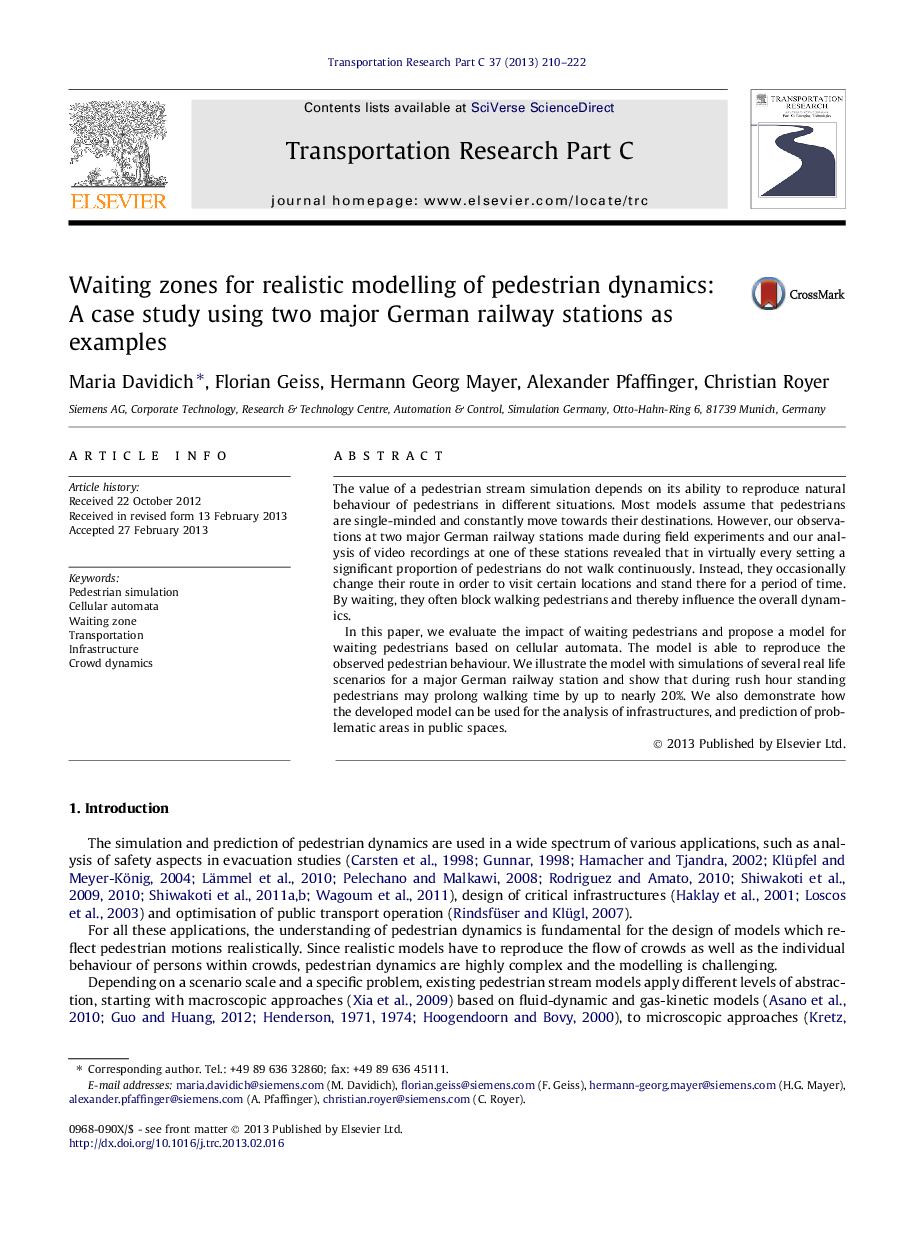| کد مقاله | کد نشریه | سال انتشار | مقاله انگلیسی | نسخه تمام متن |
|---|---|---|---|---|
| 525344 | 868909 | 2013 | 13 صفحه PDF | دانلود رایگان |

• The influence of standing/waiting pedestrians on pedestrian dynamics is investigated empirically and by simulation.
• We propose a waiting zone model for microscopic simulation of pedestrian dynamics.
• The model is calibrated and tested using data from video recordings and field experiments.
• Applying the proposed model adds value to the realism of pedestrian simulations.
• The model can be applied for analysis and prediction of critical situations.
The value of a pedestrian stream simulation depends on its ability to reproduce natural behaviour of pedestrians in different situations. Most models assume that pedestrians are single-minded and constantly move towards their destinations. However, our observations at two major German railway stations made during field experiments and our analysis of video recordings at one of these stations revealed that in virtually every setting a significant proportion of pedestrians do not walk continuously. Instead, they occasionally change their route in order to visit certain locations and stand there for a period of time. By waiting, they often block walking pedestrians and thereby influence the overall dynamics.In this paper, we evaluate the impact of waiting pedestrians and propose a model for waiting pedestrians based on cellular automata. The model is able to reproduce the observed pedestrian behaviour. We illustrate the model with simulations of several real life scenarios for a major German railway station and show that during rush hour standing pedestrians may prolong walking time by up to nearly 20%. We also demonstrate how the developed model can be used for the analysis of infrastructures, and prediction of problematic areas in public spaces.
Journal: Transportation Research Part C: Emerging Technologies - Volume 37, December 2013, Pages 210–222